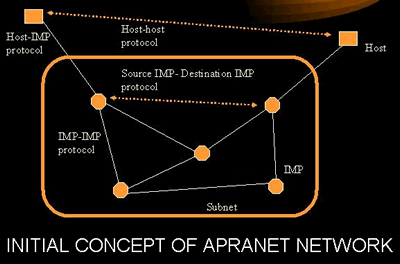The Origins of the Internet
2. Page 2
The first to be crowned with success were the United States Air Force researchers. They utilized the dense private radio station network in the United States and partly the frequency that was not used by them (both radio and television stations do not make use of a large part of the frequency bands allotted to them, through which, nowadays, teletext or RDS signals are transmitted). This way, without the radio stations knowing anything about the whole thing, they built up a tape machine network responsible for transmitting, in their frequency, Air Force signals.

That must have been the first Internet network in the world. The next step was the creation of the ARPANET (that was the predecessor of the Internet), which also utilized an already existing dense private network, the one used by the telephone companies. This network, in spite of the AT&T big shots’ resentment, was developed and linked at first nine universities with some of their researchers using it to exchange their views on…science fiction. To the military establishment’s horror, the message exchange coverage expanded and as time went by, the Pentagon had to set up their own network called DARPANET, leaving thus ARPANET in the hands of the academic community who, in their turn distributed the ARPANET to the rest of the world, and what was initially meant to be an armed forces network was turned into a scientific one and later on into a network belonging to all of us…
A COMMENT
The way history is made is really amazing. Small details pile up like the flying course of a butterfly in China that would start up a storm in New York. Today, no one can question the fact that even the plan of the building where the Internet was designed, played an important role in the story. The mentality lying behind the random routes leading in fortuitous encounters amongst least acquainted people had one and only goal: the production of specialized research. This is how the Internet operates nowadays. Every message sent, every image or sound transmitted through the Net is disassembled to packets switched to random routes in myriads of cords to end up being assembled by the receiver.
A second element worth of attention is the fact that the informatics technology as a whole has been the outcome of war, be it either a real or a fictitious one. The first electronic computer, called ENIAC, was built at the end of World War II to facilitate anti-aircraft batteries aiming at bombers. The predecessor of the biggest network of all times was set up to confront a cold war nuclear threat. Maybe the great film director Orson Welles was right in writing: “In Borgias’ Italy, for thirty years there was war, terror, bloodshed. Yet, those long years produced Michelangelo, Leonardo da Vinci and the Renaissance. In Switzerland brotherly love reigned, not to mention the 500 years of democracy and peace, but what was the heritage left? The cuckoo clock.” Need has always been a schemer.
By Pashos Mandravelis.
email to P. Mandravelis













